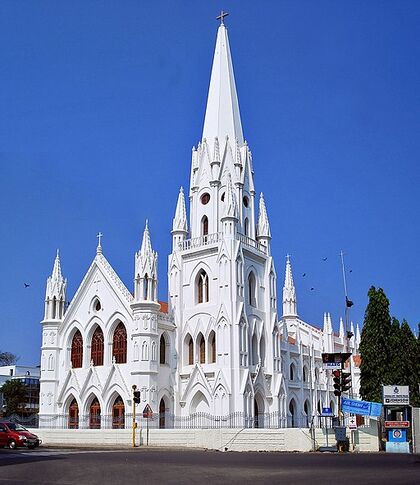Thomas the Apostle (Saint Thomas in Catholic and Orthodox traditions) is best known as the "doubting Thomas" concerning the Resurrection of Jesus: "Except I shall see in his hands the print of the nails, and put my finger into the place of the nails, and put my hand into his side, I will not believe" (John 20:25)
About a week later Thomas did see and believe, with Jesus stating: "Because thou hast seen me, Thomas, thou hast believed; blessed are they that have not seen, and have believed" (John 20:29).[1]
At the Last Supper, Thomas received the beautiful assurance that Christ is the Way, the Truth, and the Life.
According to ancient tradition, Thomas later traveled to the west and south (Kerala) coasts of India (see Aramaic Church and Adiabene) and converted many to Christianity there. That region of India remains heavily Christian to this day, despite being in a country that is overwhelmingly Hindu and Muslim and tends towards harsh persecution against Christians in modern times.
Feastday: July 3.
See also
External links
- St. Thomas Catholic Online.
Notes and References
- ↑ Elder Gordon B. Hinckley said: "Have you not heard others speak as Thomas spoke? 'Give us,' they say, 'the empirical evidence. Prove before our very eyes, and our ears, and our hands, else we will not believe.' This is the language of the time in which we live. Thomas the Doubter has become the example of men in all ages who refuse to accept other than that which they can physically prove and explain -- as if they could prove love, or faith, or even such physical phenomena as electricity.... To all within the sound of my voice who may have doubts, I repeat the words given Thomas as he felt the wounded hands of the Lord: 'Be not faithless, but believing'" (Ensign, May 1978, p. 59.)

